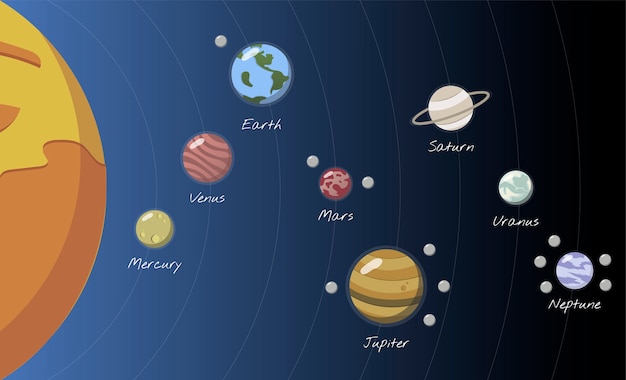

Jupiter is the largest planet in our solar system.
Jupiter is so big that it could fit all the other planets inside it.
The Great Red Spot on Jupiter is a massive storm that has been raging for over 300 years.
Jupiter has more than 75 moons.
Jupiter’s moon Ganymede is the largest moon in the solar system.
Jupiter is composed mostly of hydrogen and helium gas.
The gravity on Jupiter is 24 times stronger than on Earth.
Jupiter has the shortest day of all the planets, with one day lasting only about 10 hours.
The auroras on Jupiter are much larger and more powerful than on Earth.
The stripes on Jupiter are called cloud bands, and they are made up of different types of clouds.
Jupiter’s magnetosphere is the largest and most powerful in the solar system.
The distance between Earth and Jupiter varies depending on their positions in their orbits.
Jupiter experiences strong winds that reach speeds of over 400 miles per hour.
Jupiter has a faint ring system made up of particles from its moons.
The temperature on Jupiter can reach up to 1,340 degrees Fahrenheit (725 degrees Celsius).
Jupiter is so bright that it is often visible in the night sky with the naked eye.
Galileo Galilei was the first person to observe Jupiter’s four largest moons.
Jupiter has a bumpy ring around its equator known as the Equatorial Zone.
Jupiter’s interior is believed to contain a solid core made up of heavy elements.
Jupiter is named after the king of the Roman gods.
Jupiter has a unique feature called the string of pearls made up of eight small storms.
The atmosphere on Jupiter is composed mainly of hydrogen and helium, with traces of methane, water vapor, and ammonia.
Jupiter’s intense magnetic field is thought to be generated by the motion of metallic hydrogen within its core.
Jupiter’s moon Europa is believed to have a subsurface ocean of water.
The Juno spacecraft is currently studying Jupiter and providing scientists with valuable data.
Jupiter has been visited by several spacecraft, including Pioneer 10, Voyager 1 and 2, and the Galileo probe.
Jupiter’s gravity plays a crucial role in shaping the orbits of many smaller objects in the solar system.
The largest impact on Jupiter was observed by astronomers in 1994 when a comet collided with the planet.
Jupiter’s rotation axis is tilted at an angle of 3 degrees relative to its orbit around the sun.
Jupiter’s massive size makes it emit more heat than it receives from the sun.
Jupiter’s rings are made up of fine dust particles ejected from its moons.
The Galilean moons of Jupiter are named after Galileo Galilei, who discovered them.
Jupiter’s magnetosphere extends millions of miles into space and interacts with the solar wind.
Jupiter’s atmosphere is divided into distinct zones and belts, which result in its unique coloration.
Jupiter’s powerful gravity acts as a cosmic vacuum cleaner, attracting and capturing asteroids and comets.
The largest moon of Jupiter, Ganymede, is larger than the planet Mercury.
Jupiter has a faint, white oval-shaped storm known as Oval BA, or Red Spot Jr.
Jupiter’s gravity assists spacecraft on their way to explore other planets in the outer solar system.
Jupiter’s intense magnetic field creates spectacular auroras at its poles.
The mass of Jupiter is 2.5 times the combined mass of all the other planets in the solar system.
With a radius of about 43,441 miles (69,911 kilometers), Jupiter is 11 times the size of Earth.
Jupiter’s 67 known moons form a complex and varied family, ranging from tiny moonlets to large, geologically active worlds.
Jupiter’s rotation causes its equatorial region to bulge out slightly, giving it an oblate shape.
Jupiter has a diverse weather system, with cyclones, anticyclones, and atmospheric bands.
The presence of water vapor in Jupiter’s atmosphere has been detected, but in much smaller amounts compared to other gas giants like Saturn and Uranus
Around the world, coffee enthusiasts enjoy Monin coffee concentrate since it is a multipurpose product. Conveniently combining…
The Importance of Choosing the Right Shower for Your Bathroom Renovating your bathroom can be…
Usain Bolt holds the record for the fastest 100-meter sprint in history.Bolt was named Sportsman…
Love is in the air... and it smells suspiciously like chocolate!Roses are red, violets are…
Life's a beach, take a picture and relax.Sun, sand, and salty kisses. That's what beach…
Hungary is home to the largest thermal water cave system in the world.The Rubik's Cube…